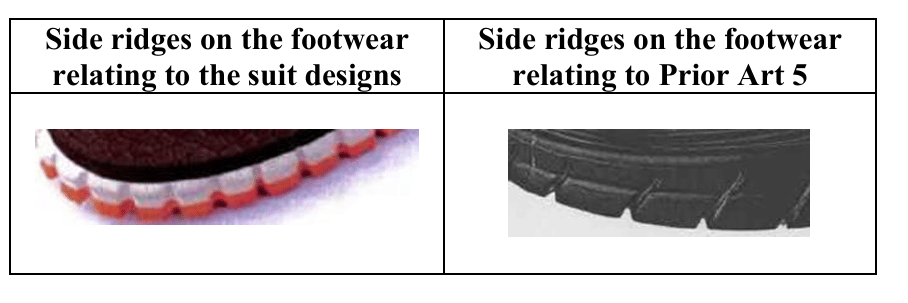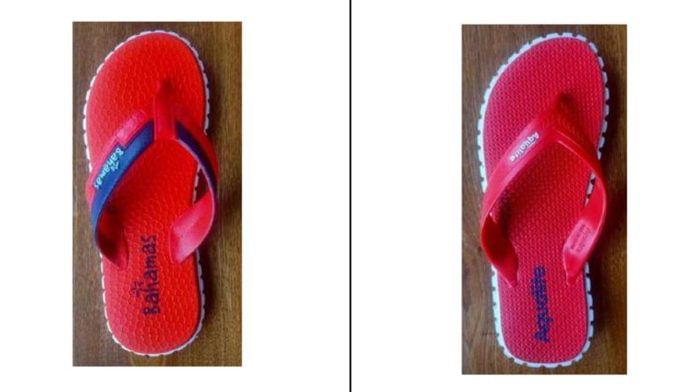New Delhi: In a verdict that elevates the humble hawai chappal to an object of “novelty”, the Delhi High Court has upheld a design infringement injunction in favour of manufacturer Relaxo Footwears, ruling that even everyday flip-flops can embody protectable creative expression.
Dismissing an appeal filed by Aqualite Industries, the HC Tuesday held that Relaxo (Bahamas brand) had established a strong prima facie case of design piracy and that a single judge was right in granting an interim injunction in 2021 barring Aqualite from manufacturing and selling slippers that mirror Relaxo’s patented “side-ridge” design.
“Relaxo Footwears makes, among other kinds of footwear, hawai slippers–the Indian avatar of flip flops,” notes the order by a division bench of Justices C. Hari Shankar and Om Prakash Shukla.
The judges examined the designs, prior art documents and the footwear of both companies. They were ultimately satisfied that “there is novelty in the crenellation-like side ridges on the vertical outer surface of the suit designs, vis-à-vis the ridges on the vertical outer surface of the prior art footwear”.

A battle over ridges
The conflict began when Relaxo sued Aqualite for infringing two registered slipper designs. According to Relaxo, Aqualite had produced blatant replicas, particularly copying one distinguishing visual feature: the vertical ridges running along the sides of the sole.
On 8 October, 2021, the single judge in the intellectual property division of the Delhi High Court agreed that Relaxo had demonstrated a prima facie case and granted an interim injunction restraining Aqualite from manufacturing or selling the alleged copies.
The injunction was granted on the application filed along with the main suit, which continues to be heard by the intellectual property division.
Aqualite appealed to the division bench against the order in 2022. It argued that Relaxo’s designs were “invalid”, “lacked aesthetic appeal”, and contained “nothing special”.
The bench disagreed. On the “aesthetic appeal” argument, the court responded pointedly: “Whether a design is, or is not, aesthetically appealing is a matter of entirely subjective personal opinion… beauty, after all, lies in the eyes of the beholder.”
It further clarified: “It is not necessary for a design to be registrable, that it must be beautiful or even aesthetically appealing. All that is required is that it must possess a distinct visual appeal. That appeal itself may be positive or negative.”
Aqualite’s attack on novelty
In its appeal, Aqualite did not seriously dispute that its slippers carried the same side ridges as Relaxo’s. Instead, it launched an attack under Section 22(3) of The Designs Act, 2000—challenged the validity of this design registration—arguing that the design lacked novelty and was anticipated by earlier publications.
Aqualite cited several prior art designs with allegedly similar ridged pattern. It also tried to argue that the design failed the “appeal to the eye” requirement.
Relaxo countered, stating that Aqualite had itself applied to register an identical design, undermining its claim that the design lacked novelty altogether.
Test that defeated Aqualite case
The division bench rejected Aqualite’s challenge, relying on the judicially-developed “instructed eye” test for assessing design novelty—an observer who is aware of the specific features of prior art, rather than an average consumer.
Quoting B. Chawla & Sons, 1981, the court noted: “A person of average intelligence and imperfect recollection may not recollect all the specific features of the prior art. At the same time, the instructed eye, which is aware of the novel features of prior art, would be much better equipped to assess as to whether the suit design is novel vis-à-vis prior art.”
The judges observed that footwear offers limited scope for novelty because its shape and structure are dictated by functional considerations. Yet, even within those constraints, meaningful design differences can exist.
Relaxo’s vertical side ridges, the court said, were one such difference.
A close examination showed that Relaxo’s ridges had a “rectangular, crenellation-shaped” profile, distinctly different from the “more saw-like” ridges found in the cited prior art. This distinction, the bench held, meant that the design was not copied, not generic, and not liable to cancellation under Section 19 of The Designs Act.
Once the court upheld the design’s validity, the issue of infringement became straightforward. The division bench found that Aqualite’s slippers “identically bear the side ridges” of Relaxo’s BHG models and even matched the placement of the brand name, strengthening the visual overlap.
With design validity established and copying evident, the court dismissed Aqualite’s appeal, formally recognising that even the unassuming hawai chappal can carry a legally protectable artistic signature.
(Edited by Nida Fatima Siddiqui)
Also Read: We blame the government for being too litigious. Data tells a very different story






